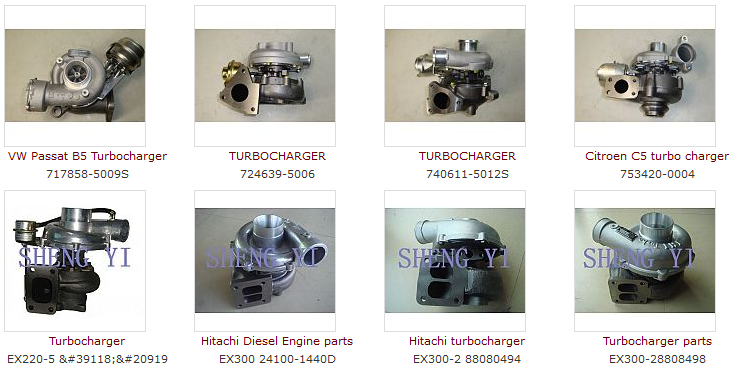The turbocharger shaft and turbine wheel assembly rotates
at speeds up to 300,000 rpm. Turbocharger life should correspond to
that of the engine, which could be 1,000,000 km for a commercial
vehicle. Only sleeve bearings specially designed for turbochargers can
meet these high requirements at a reasonable cost.

Radial bearing system
With
a sleeve bearing, the shaft turns without friction on an oil film in
the sleeve bearing bushing. For the turbocharger, the oil supply comes
from the engine oil circuit. The bearing system is designed such that
brass floating bushings, rotating at about half shaft speed, are
situated between the stationary centre housing and the rotating shaft.
This allows these high speed bearings to be adapted such that there is
no metal contact between shaft and bearings at any of the operating
points. Besides the lubricating function, the oil film in the bearing
clearances also has a damping function, which contributes to the
stability of the shaft and turbine wheel assembly. The hydrodynamic
load-carrying capacity and the bearing damping characteristics are
optimised by the clearances. The lubricating oil thickness for the inner
clearances is therefore selected with respect to the bearing strength,
whereas the outer clearances are designed with regard to the bearing
damping. The bearing clearances are only a few hundredths of a
millimetre.
The one-piece bearing system is a special form of a
sleeve bearing system. The shaft turns within a stationary bushing,
which is oil scavenged from the outside. The outer bearing clearance can
be designed specifically for the bearing damping, as no rotation takes
place.
Axial-thrust bearing system
Neither the fully floating bushing bearings nor the single-piece fixed floating bushing bearing system support forces in axial direction. As the gas forces acting on the compressor and turbine wheels in axial direction are of differing strengths, the shaft and turbine wheel assembly is displaced in an axial direction. The axial bearing, a sliding surface bearing with tapered lands, absorbs these forces. Two small discs fixed on the shaft serve as contact surfaces. The axial bearing is fixed in the centre housing. An oil-deflecting plate prevents the oil from entering the shaft sealing area.

